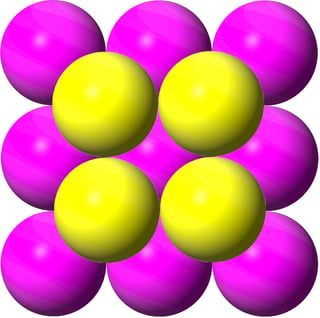More precisely, in a regular sphere packing, either the HCP or FCC lattice packing, does there exist a line $L$ disjoint from every sphere, i.e., not touching any sphere? If so, one could "look through" the packing along the line-of-sight $L$.
Image from a (much!) earlier posting:



